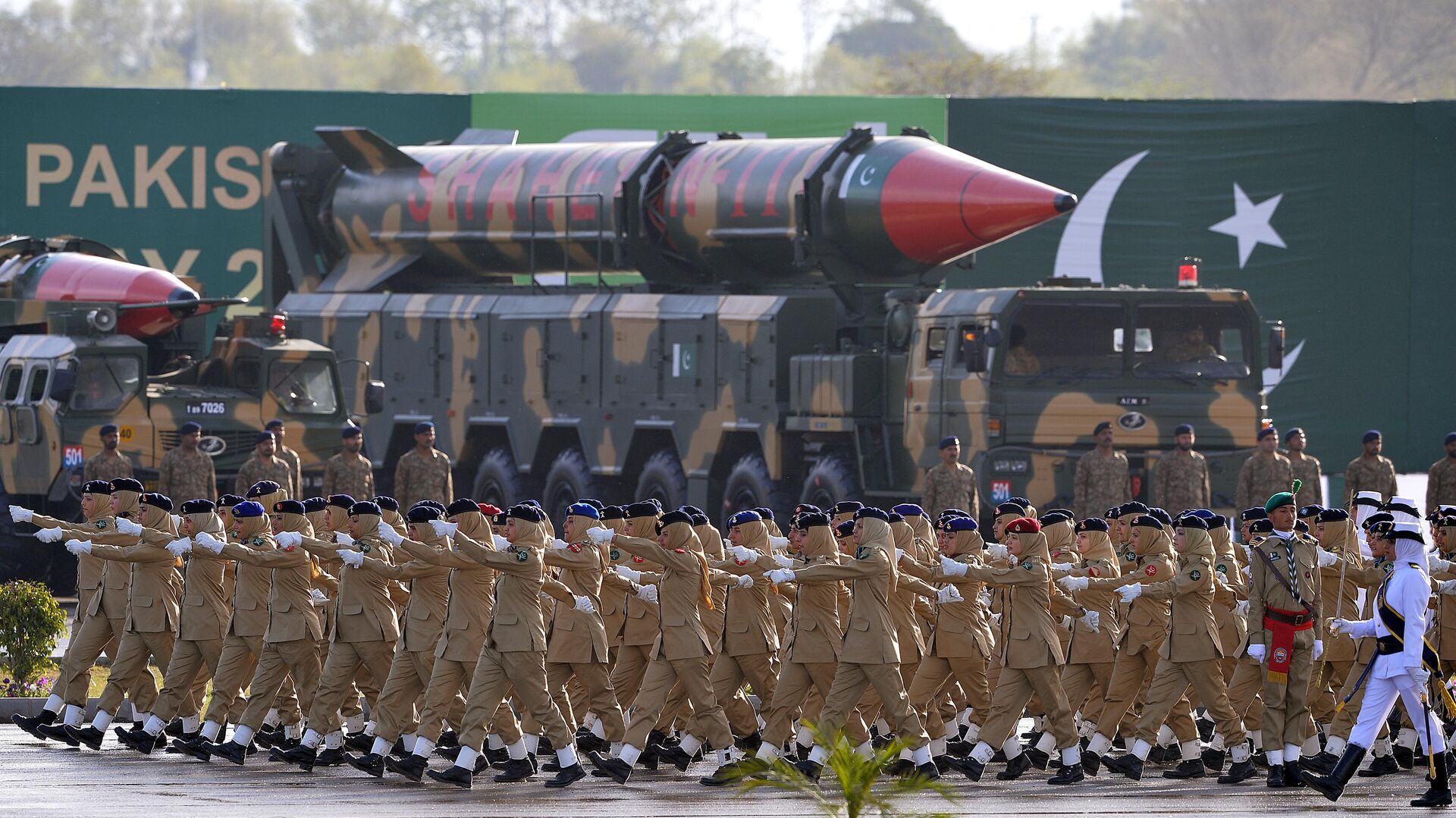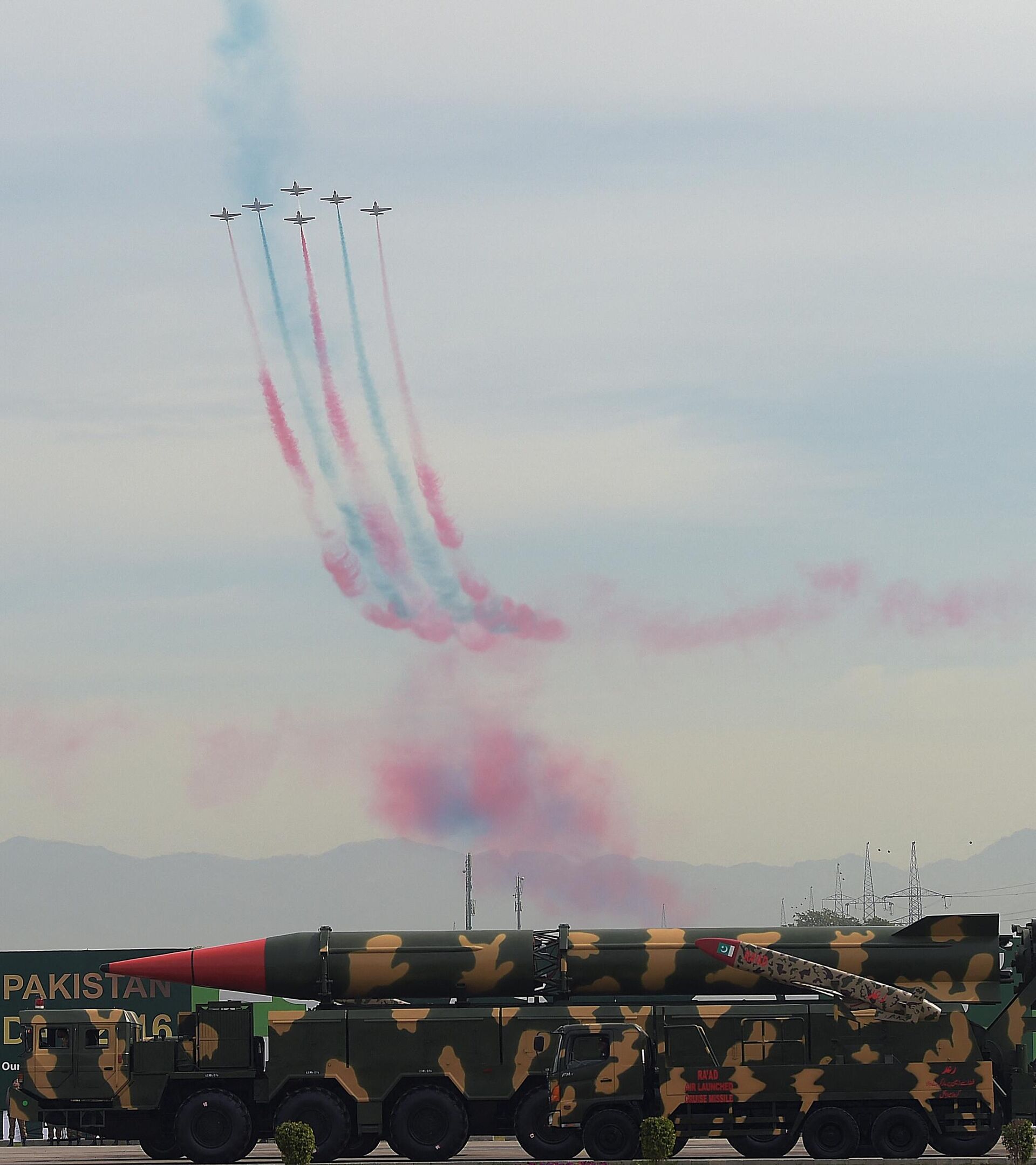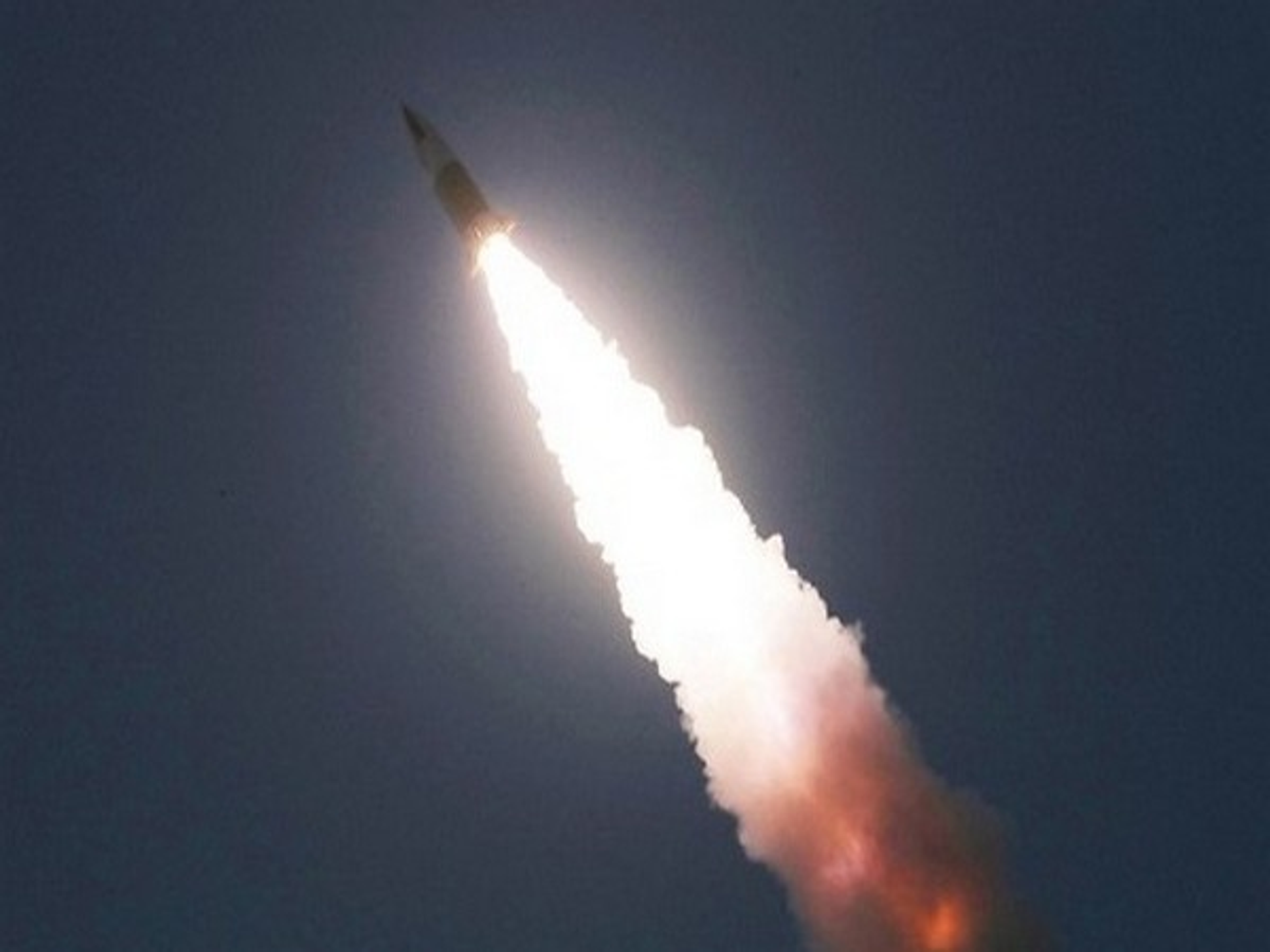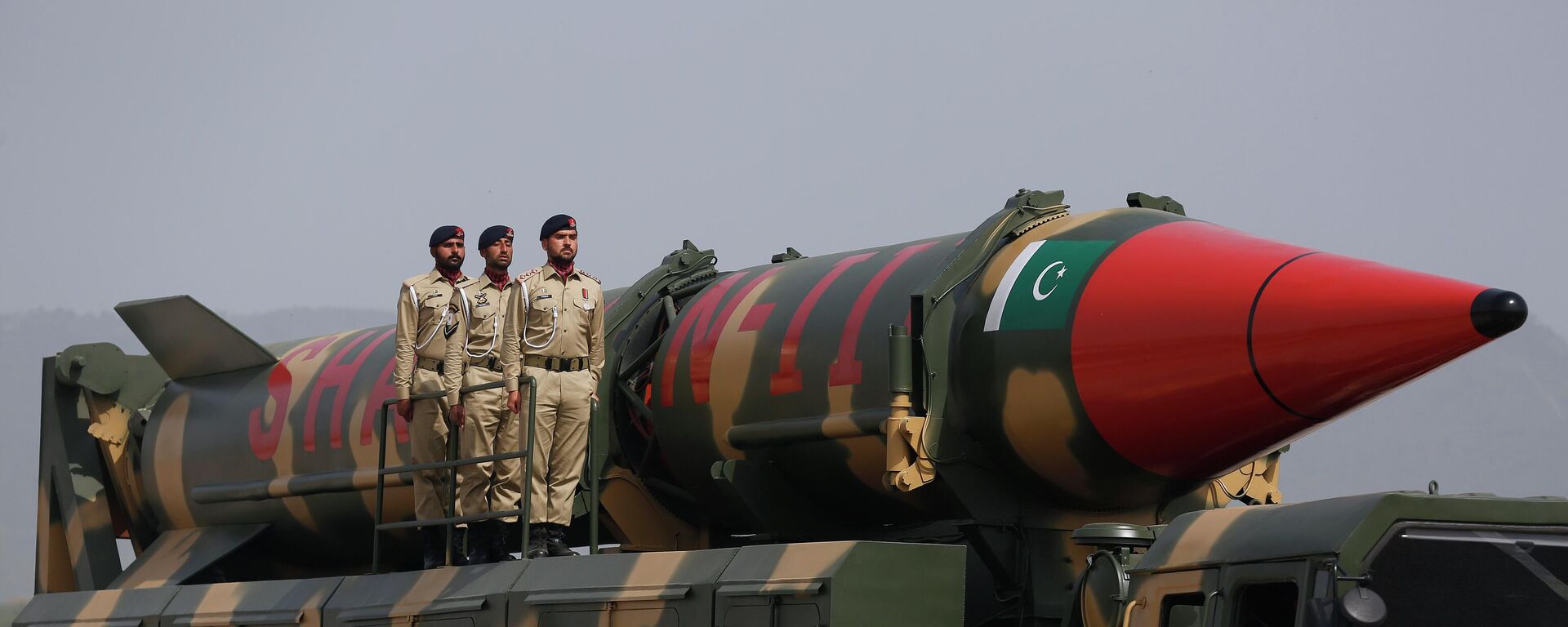How Powerful is Pakistan's Shaheen-III Ballistic Missile?
01:09 07.10.2023 (Updated: 13:25 08.10.2023)

© AFP 2023 AAMIR QURESHI
Subscribe
Sputnik India explores Pakistan's most powerful missile -- Shaheen-III, which reportedly has the longest range out of all the missile system Pakistan has deployed.
The evolution of Pakistan's ballistic missile program has been a matter of great significance for national security.
Over the years, Pakistan has made significant advancements in missile technology, with one of its most impressive achievements is the development of the Shaheen-III missile.
Its development phase began in the early 2000s, in response to India's successful test-firing of the Agni III missile, which had the capability to hit any target inside Pakistan. The Shaheen 3 missile was first test-fired on March 9, 2015, and subsequently displayed during a military parade in March 2016.

Pakistani jets perform over long-range ballistic Shaheen III missiles during the Pakistan Day military parade in Islamabad on March 23, 2016.
© AFP 2023 AAMIR QURESHI
Sputnik India delves into the unmatched capabilities of the Shaheen-III missile, shedding light on its range, accuracy, impact on regional security, technological advancements, and future developments.
Understanding the Capabilities of Shaheen-III
Range: The Shaheen-III missile boasts an impressive range of 2,750 kilometers, making it Pakistan's longest-range missile.
Propulsion System: This missile utilizes a two-stage, solid propellant propulsion system, providing it with the necessary thrust to reach its intended targets.
Mobility and Launch Method: The Shaheen-III missile is road-mobile, mounted on a Chinese transporter erector launcher (TEL). This mobility allows for enhanced flexibility in deployment and launch options.
What's the Strategic Aim of Shaheen-III?
The primary objective of the Shaheen 3 missile is to bolster Pakistan's deterrence capabilities against potential adversaries, particularly India.
Lieutenant General (Retd.) Khalid Kidwai, a Pakistani military official, has stated that the missile was specifically designed to target India's Northeast and island commands.
This strategic choice ensures that India cannot use these regions as "strategic bases" to establish a second-strike capability.
When comparing the Shaheen-III missile with other ballistic missiles in the region, it becomes evident that it possesses unmatched capabilities.

India successfully testfires Agni Prime new generation missile off Odisha Coast
© Photo : ANI
Pakistan's Shaheen-III vs. India's Agni V
When comparing the Shaheen 3 and Agni V missiles, it becomes clear that the Agni V outperforms its Pakistani counterpart in several key areas:
1.
Range: The Agni V has a significantly larger operational range, making it capable of reaching targets up to 8,000 kilometers away, including China's eastern seaboard.2.
Propulsion and Navigation: The Agni V's propulsion system and navigation capabilities are on par with those of the Shaheen 3 missile. Both utilize solid propellant systems and advanced navigation technology.3.
Versatility and Mobility: While the Shaheen 3 missile is road-mobile, the Agni V has both road and rail mobility, providing India with greater flexibility in deployment options 6.Despite the Shaheen 3 missile's impressive range, it's clear that India's development of the Agni V, with its extended range and superior accuracy, poses a significant challenge for Pakistan's strategic deterrence. While the Shaheen 3 missile enhances Pakistan's capabilities in the region, it is clear that India currently maintains an advantage in missile technology and range.
Looking ahead, it is crucial to monitor the ongoing developments in both countries' missile programs: Pakistan may seek to bridge the technological gap through collaboration with its ally, China, while India continues to refine and expand its missile capabilities.

